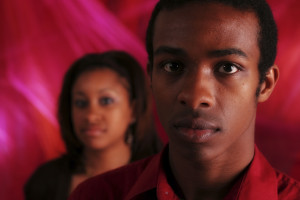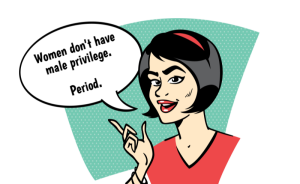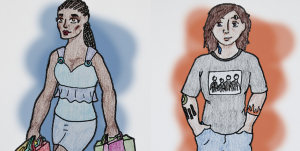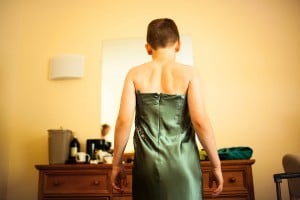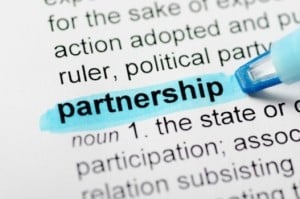“Evolution made it so that women are sexually fluid. That’s because we used to live in harems, where women got used to being affectionate with one another. But men are attracted to one gender or the other.”
“What about bisexual men?”
“They don’t really exist. Men didn’t evolve that way because they’re the sexual initiators. Their desire is more focused. I mean, the ones who say they’re bisexual usually just prefer women emotionally.”
“My boyfriend’s bisexual.”
“Oh. I’m sorry. But, I mean, preferring someone emotionally more than physically is not a bad thing. It might actually make your relationship deeper.”
Well, that was awkward.
When a classmate tried to convince me that people like my boyfriend did not exist, I proclaimed his sexual orientation unabashedly because I was angry and wanted her to know that bisexual men are in fact real.
But normally, to be honest, I kept his sexuality hidden. I feared others would judge him – and me. And when I think about all the messages I received about bisexual men and women who date them, it’s easy to see where this fear came from.
There was the friend who said she wouldn’t date someone bisexual because he would cheat with a man. There was the time my dad said he totally supported gay rights, but didn’t understand how someone could be neither gay nor straight. And I was familiar with the stereotype that bisexual men are too feminine and, as my classmate implied, really just gay.
Yet more men have come to identify as bisexual over the past few years, since it has become slightly less stigmatized, with about one in fifty classifying themselves this way from 2011-2013.
Sexual fluidity is higher for younger people, with about one in 40 men ages 18-24 saying they’re bisexual and one in 13 saying they’re sexually attracted to men and women, suggesting that societal attitudes have a huge impact on our attraction, or at least our admission of it.
So, despite my classmate’s assertions, there were most likely at least two men in our 30-person class who experienced attraction to both sexes – not just “emotionally,” but sexually, too.
As a straight, cis person, I haven’t had personal experience with the stigmatization of LGBTQIA+ people. But my fear of admitting that I was dating one gave me a glimpse into what it must be like to feel pressure to hide your identity.
I’ve seen that the marginalization of people attracted to the same gender is very powerful, and it bleeds over onto the people who date them.
When we think of those who date or have sex with more than one gender, we may automatically consider them bisexual, which is how my ex (and another ex in a shorter-term relationship) identified.
But there are other orientations, such as pansexual and omnisexual, and experiences of sexual fluidity that also can involve dating more than one gender. I will be using the word “polysexual” to encompass all such identities.
When polysexual men date women, they may “pass” as straight if they choose, and both men and women in these relationships may feel compelled to take advantage of that option. But they shouldn’t have to.
I’ve touched on a few of the myths that hurt polysexual men and women they date already, but here are some of the main ones in a bit more detail.
Myth #1: Polysexual Men Are Really Just Gay
The misconception that polysexual men don’t exist teaches women who date them that they’re just stepping stones until their boyfriends discover who they really are.
While I knew that my boyfriend was attracted to me – in fact, he was actually more attracted to women than men – I avoided telling most people he was bisexual out of fear that they’d launch into the pseudoscientific “bisexual men are really just gay” speech that my classmate graced me with.
This myth not only makes women paranoid that their partners will leave them, but also erases polysexual people, who have often worked up a lot of courage just to get to the point where they can say who they are. To hear someone try to tell you who you really are when it took so much for you to reveal your true identity doesn’t seem like a pleasant experience.
Besides, it doesn’t even make sense to identify as polysexual just to avoid the stigma attached to being gay. Being polysexual is stigmatized also. If a man who is dating a woman wanted to avoid stigma, he would just claim to be straight.
As more and more statistics are revealing, the polysexual population is growing as acceptance increases, and it is far from limited to women. But ultimately, it doesn’t matter how big the population is.
Nobody should need statistics to prove their own existence. It’s only respectful to believe what people say about their own feelings and desires, no matter what “science” has taught you.
Myth #2: Polysexual Men Will Cheat on Women with Men or Vice Versa
First of all, there’s a popular notion that polysexual people in general will cheat, as if someone’s attraction to more than one gender means they must be involved with all of those genders at all times.
If we just stop to think about that, we’ll realize nobody feels compelled to date people with every single quality they’re attracted to. If you’re attracted to people with more than one hair color, that doesn’t mean you constantly need to be dating a blonde, a brunette, and a redhead.
Plus, people aren’t like ice cream. You can’t sort them into flavors based on one trait and take a scoop of each. Every individual is a unique mix of countless qualities.
Add the perception that polysexual people cheat to the stereotype that men cheat because they have uncontrollable sex drives that crave variety, and people become highly suspicious of polysexual men.
To the contrary, one study on bisexual people found that many were monogamous and those who weren’t usually had consensual open relationships rather than cheating.
Speaking of which, dating more than one person isn’t inherently a bad thing. It only is if the relationship is assumed to be monogamous. That’s another assumption that contributes to the stigmatization of polysexual people and needs to be challenged.
Being told your partner is cheating on you is not fun, so unless you’ve got in on tape, could we please just…not?
Myth #3: Polysexual Men Are More Feminine
First of all, so what if they were? Just throwing that out there, because it ain’t a bad thing.
But since it’s considered a bad thing for men to be feminine, and since men who only have sex with women are considered more masculine, women who date polysexual men may pick up on the perception that their partner is less desirable and that they should be dating a “real” man.
The assumption that our partners are less masculine can in turn make women feel less feminine, which also is not a bad thing, but we’re taught it is.
“Masculinity” and “femininity” don’t have any objective meaning, though. They have whatever meaning we assign to them, and many people’s definitions do not involve who we date.
Our partners’ level of gender conformity does not reflect on us, and even if it did, that would be A-okay because masculinity and femininity are arbitrary, unimportant labels.
Myth #4: If a Woman and a Man Are Dating, They’re Both Straight
The most outrageous myth about polysexual people is that they don’t even exist.
Since people tend to assume someone is either gay or straight, they often think they can pinpoint someone’s sexual identity based on who they’re dating.
But all you know when you see two people dating is that they’re attracted to each other. (Or not even that, since asexual people can be in relationships primarily based on emotional attachment.) They may be capable of attraction to a diverse array of others. You just don’t know.
That’s another reason it’s important to watch what you say about sexuality around others. You can’t guess how someone identifies.
The woman who told me men can’t be bisexual, for example, was assuming I as a straight woman wouldn’t date a bisexual man. So was the homophobic relative who asked my ex if Brokeback Mountain disgusted him.
Even when people believe someone was once not straight, some might be convinced that if someone currently dating a woman has dated men in the past, he’s straight now. However, even if a man has only dated women, he’s still bisexual if he says he is. Nobody else gets to define him.
And you know what they say about making assumptions, right?
***
To be clear, dating an LGBTQIA+ person does not stigmatize someone as much as being LGBTQIA+.
By dating bisexual people, I’ve deviated from the ideal of femininity that women are supposed to embody, but I was not considered an inferior type of human, and nobody even had to know about it if I didn’t feel comfortable telling them.
In fact, because people assume that every man dating a woman is straight, my partners’ orientations have never come up in conversation unless I brought them up.
Dating bisexual people has, however, opened my eyes to the stigmas that face them, because they affected me, too.
If we want to eradicate these stigmas and create a world of people free to reveal their sexual orientations and their partners’, we must respect everyone’s ability to define themselves and believe them when they do.
[do_widget id=’text-101′]
Suzannah Weiss is a Contributing Writer for Everyday Feminism and a New York-based writer whose work has appeared in The Washington Post, Salon, Seventeen, Buzzfeed, The Huffington Post, Bustle, and more. She holds degrees in Gender and Sexuality Studies, Modern Culture and Media, and Cognitive Neuroscience from Brown University. You can follow her on Twitter @suzannahweiss.
Search our 3000+ articles!
Read our articles about:
Our online racial justice training
Used by hundreds of universities, non-profits, and businesses.
Click to learn more


